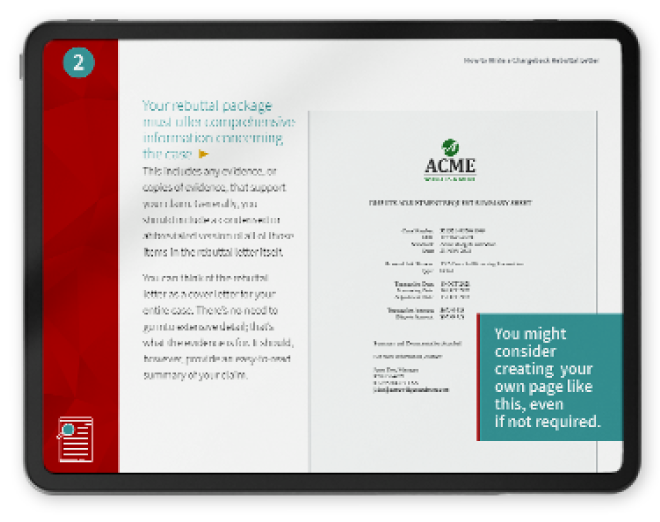First-Party Misuse: An Accidental, Yet Costly Problem in the eCommerce Space
Have you seen the latest data from Mastercard about global chargeback volume?
Apparently, cardholders will file 337 million chargebacks in 2026. That’s an increase of 42% over the number of chargebacks filed in 2023.
Chargebacks are meant to protect consumers against fraud and abuse. The problem is that it’s never been easier to file a chargeback, and as a result, most of those 337 million chargebacks will be filed without a valid reason.
One category of chargeback abuse comes in the form of “first-party misuse.” This is a seemingly benign form of chargeback abuse that occurs by accident.
Cardholders who engage in first-party misuse aren’t necessarily out to defraud sellers. That doesn’t really make it “better” for merchants, though. Every chargeback has tangible consequences for merchants, regardless of why they happen. In this light, cardholder intent doesn’t matter; what matters is how merchants are affected.
In this article, we’ll offer an overview of first-party chargeback misuse. We’ll discuss how it works, what sets it apart from more deliberate and malicious forms of chargeback abuse, and what merchants can do to prevent it.
Recommended reading
- Twitch Misadventure Highlights Growing Chargeback Problem
- How Cyber Shoplifting Works | Prevention & Revenue Recovery
- What is Return Fraud? 10 Tips for Merchants to Fight Back
- Post-Holiday Chargebacks Could Undermine 2024 Holiday Sales
- What is Chargeback Fraud? How do You Protect Yourself?
- Is AI Being Abused to Commit Chargeback Fraud?
What is First-Party Misuse of the Chargeback Process?
- First-Party Misuse
First-party misuse of the chargeback process occurs when a cardholder unintentionally initiates a chargeback against a legitimate transaction.
[noun]/fərst • pär • dē • mis • yo͞oz/
There are countless reasons why a cardholder might file a chargeback without having a valid reason to do so.
Many cases of first-party misuse are essentially accidental cases of friendly fraud. The cardholder files a chargeback, or a chargeback was filed on the cardholder’s behalf by the bank. There was no valid reason for the chargeback, but there was also no malicious intent behind the invalid chargeback.
At the other end of the spectrum, buyers deliberately abuse the chargeback process to take advantage of merchants. They’re trying to get products or services for free, at the seller’s expense.
Accidental Misuse
Chargebacks filed by legitimate customers who are unaware they’re doing anything wrong.
Friendly Fraud
Misuse of a chargeback by cardholders who see their activity as a “victimless crime”.
Chargeback Fraud
Deliberate chargeback abuse carried out by a criminal seeking to defraud merchants.
From the merchant’s perspective, it’s kind of a distinction without a difference. First-party misuse, friendly fraud, chargeback fraud — whatever term you use, they all lead to similarly negative outcomes.
Merchants stand to lose revenue and inventory every time a customer disputes a charge. Merchants are also on the hook for chargeback fees, which are assessed by acquiring banks or payment networks and typically range from $20 to $100 for every chargeback the merchant loses. These are just some of the potential consequences of first-party fraud.
How Does First-Party Misuse Happen?
Most instances of first-party misuse stem from honest misunderstandings. It usually happens because the cardholder doesn’t understand how chargebacks work, or doesn’t understand the ramifications of requesting a chargeback.
There are a lot of different situations that fall under the mantle of first-party misuse. Here are a couple of the most common examples:
Unclear Billing Descriptors
The billing descriptor is the short incidator that appears on your customers’ statements. Maybe a cardholder made a legitimate purchase, but they don’t recall the transaction or recognize your billing descriptor. The cardholder contacts their bank to initiate a chargeback, fearing their card has been compromised by fraudsters.
Purchases by Family Members
It’s common for family members to share payment card details with one another. Maybe a child makes a purchase without the cardholder’s knowledge or consent. Then, when the cardholder reviews their debit or credit card statement, they discover charges they don’t recognize and dispute them.
Buyer Misinterprets Your Return Policies
Some merchants write a lot of conditions and variables into their return policies. The goal might be to discourage returns. This is a bad idea, though; if a customer is trying to request a refund, but is confused about your policies, he might just say “forget it” and call the bank to dispute the charge instead.
Confusing Chargebacks & Refunds
The cardholder doesn’t understand the difference between a chargeback and a refund request. After all, from the buyer’s perspective, both options have the same result, so what’s the difference? So, the buyer files a chargeback, not realizing it’s different from requesting a refund from the merchant.
Distinguishing Accidental First-Party Misuse From Chargeback Fraud
First-party fraud chargebacks exist on a spectrum, with unintentional chargeback misuse on one end, and deliberate chargeback fraud on the other. Most chargebacks that get requested without a valid reason will fall somewhere between these two extremes.
We’ve talked before about the chargeback spectrum. This refers to the broad gray area that exists between totally unintentional chargeback misuse and deliberate chargeback fraud.
Accidental chargeback misuse exists on the more benign end of this spectrum. Like we said, they can happen when cardholders file chargebacks after misidentifying legitimate charges as fraud, or being confused about proper transaction policies or procedures.
Friendly fraud is the next step up: it’s not as benign, but it’s not overtly malicious like chargeback fraud. Friendly fraud can be intentional, even if the cardholder is not really trying to swindle you. For example, filing a chargeback in response to buyer’s remorse, or because the buyer wants to cancel a subscription without having to go through official channels.
Chargeback fraud, the most severe form of chargeback abuse, is deliberate, malicious, and overtly illegal. What sets chargeback fraud apart is that it involves clear, bad intention. For instance, a cardholder commits chargeback fraud when they engage in cyber shoplifting. In short, chargeback fraud involves deliberately misusing a chargeback request to steal from merchants
Is First-Party Misuse Illegal?
Chargeback misuse could be considered a form of wire fraud. However, cardholders are rarely (if ever) prosecuted for abusing the chargeback process. And, depending on the circumstances that led to the chargeback request, the cardholder may not have actually carried out any action that could make them legally liable.
First-party misuse, like all forms of fraud, is technically illegal. However, it’s virtually inconceivable that a cardholder who engages in first-party misuse could get in trouble with the law.
Of course, that’s not to say that first-party misuse isn’t a problem. All chargebacks, no matter where they lie on the chargeback spectrum, are costly for merchants. But, like we said, many cardholders do this with no malicious intent, and thus could not usually be considered “at fault” for criminal activity.
Cardholders have been prosecuted for abusing chargeback requests in the past. However, these are usually cases of egregious and obvious chargeback fraud.

The Impact of First-Party Chargeback Misuse
Regardless whether chargeback misuse is accidental or intentional, the end result is the same. Merchants lost a total of $54.5 billion due to chargebacks in 2024. And, given current trends, that total will probably increase to $77.3 billion annually by 2026.
We touched on this a bit at the beginning of the post. But, let’s get into a bit more detail here, and give you a better impression of the scale of the problem.
When one of your customers files a chargeback, you lose the revenue from that initial sale. You also lose the cost of any merchandise already shipped to the buyer, plus incidental costs like shipping, interchange, and other overhead expenses. You’ll also be assessed a chargeback fee, which your bank charges you to cover their costs associated with the chargeback.
All these ancillary costs are reflected in the Fraud Multiplier, published by LexisNexis Risk Solutions. In 2024, the average merchant ended up paying $3.02 for every dollar disputed by cardholders:
Over time, chargebacks can add up, and begin to reflect badly on your chargeback ratio. If your chargeback ratio gets too high, you could face consequences up to and including your bank account being frozen or terminated.
How Merchants Can Respond to First-Party Misuse
If you suspect that a chargeback was filed without a valid reason, you can submit a response through the representment process. This involves resubmitting a transaction, along with additional documentation, to try and reverse the chargeback.
First-party misuse occurs after a purchase is made and goods are delivered. Unfortunately, this renders fraud detection tools ineffective at stopping it.
Fraud detection tools are designed to flag and block suspicious card transactions before they go through. There’s no way to know if a completed transaction will be disputed later, meaning these tools can’t combat post-transaction threats like first-party misuse.
Data from the 2023 Chargeback Field Report shows that, among merchants that engage in representment, the average merchant won 52% of winning representment cases.
That’s not to say you’re helpless here, though.
You can respond to first-party misuse by engaging in chargeback representment. This is a process that allows you to fight invalid chargebacks.
You’ll need to gather evidence and form rebuttals against chargebacks filed by the cardholder and issuing banks. Merchants who submit compelling evidence and rebuttal letters within the required time window may be able to reverse chargeback resulting from first-party misuse.
How to Prevent First-Party Misuse of Chargebacks
You can prevent first-party misuse by tackling common mistakes and misunderstandings that lead to unintentional chargebacks. We recommend that you:
Use short and clear billing descriptors that make it easy to identify the transaction. Refrain from using vague descriptions or corporate names. Use your common (doing business as) name.
Remind customers in advance of a recurring charge. Don’t let ongoing charges or subscription payments, even if they were authorized in advance, catch cardholders off guard.
Process refund requests quickly; ideally on a same-day basis. If a cardholder requests a refund and does not receive it in a timely manner, they may initiate a chargeback to “expedite” the process. Rapid refunds can mitigate this.
Have a clear, no-questions-asked return and cancellation policy. Cardholders who find it easy to cancel or request a refund are more likely to work with you first before filing a dispute with their bank.
Provide excellent customer service in the form of proactive communication and near-instance email/phone response times. You want to do whatever you can to create the impression that, when customers have questions or concerns, it will always be easier to call you than to call the bank.
Offering free order tracking for all deliveries will give customers more insight as to where their goods are. It will help reassure buyers that their purchases are on the way, and that their goods have not been lost in transit. It’s also a good idea to request delivery confirmation for high-dollar value orders.
Consider backing products or services with warranties or satisfaction guarantees. This will give buyers the impression that you stand behind your merchandise, and that you’re not some fly-by-night operation that will disappear with their money.
The Intentions are Better, but the Outcomes are the Same
Cardholders who engage in first-party misuse may not do so maliciously. But, for merchants, the consequences are the same. All disputes result in lost revenue and higher fees.
For this reason, the best way to fight first-party misuse is simply to prevent it. Deploying an end-to-end chargeback management strategy that stops unwarranted disputes from occurring is a must for any merchant who wants to operate profitably at scale.
Backed by an industry-leading performance-based ROI guarantee, the suite of comprehensive chargeback solutions offered by Chargebacks911® can help merchants combat disputes, no matter where they lie on the chargeback spectrum. Contact us for a no-obligation analysis today.
FAQs
What is first-party misuse of a Visa card?
First-party misuse of a Visa card occurs when cardholders accidentally dispute legitimate transactions. First-party-misuse can be thought of as a more benign version of friendly fraud, which is in turn a less severe version of chargeback fraud.
What are some first-party misuse red flags?
Purchasing large quantities of the same item, spending large amounts of money with the same merchant, or using fake aliases to make purchases are all potential red flags of first-party misuse.
What are some examples of first-party misuse?
One example of first-party misuse is if a cardholder disputes a legitimate charge because the billing descriptor is confusing and unrecognizable. Another example of first-party misuse is if a cardholder disputes a purchase made by a family member without the cardholder’s knowledge or consent.















